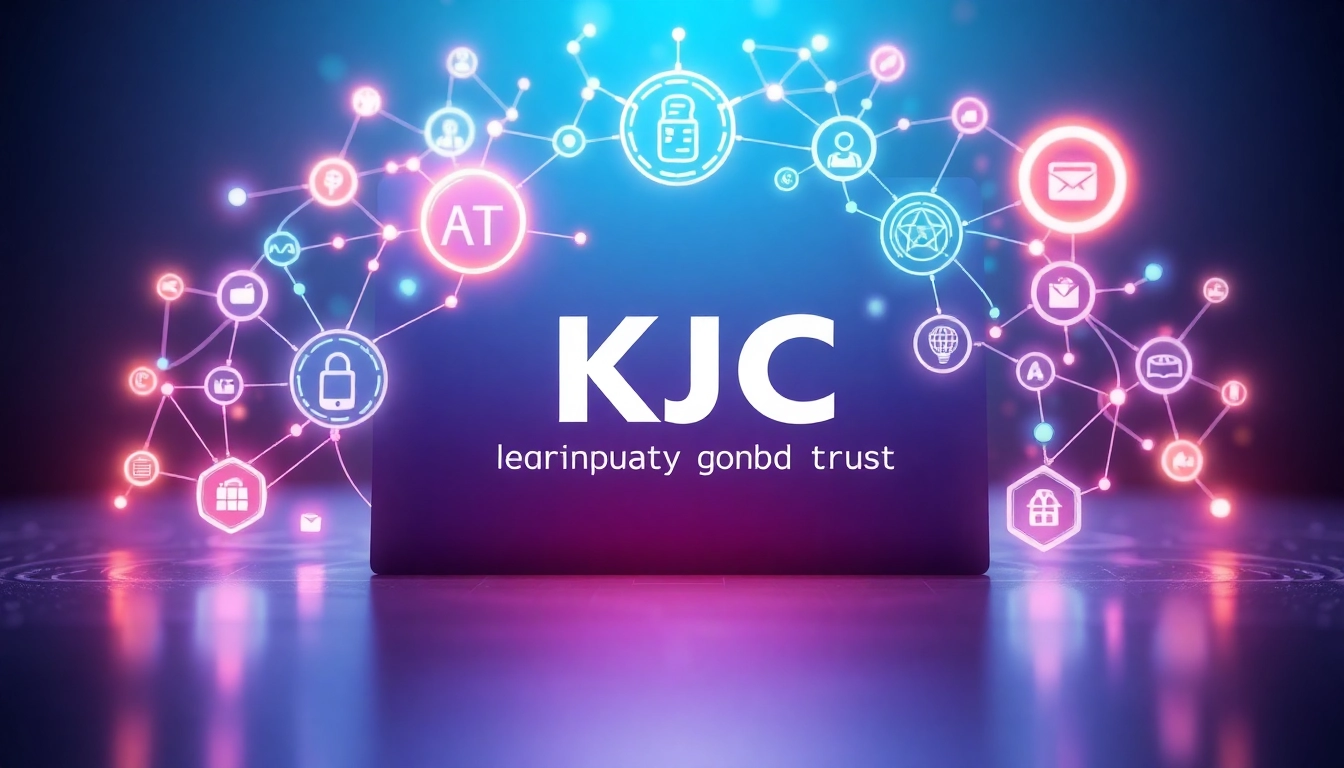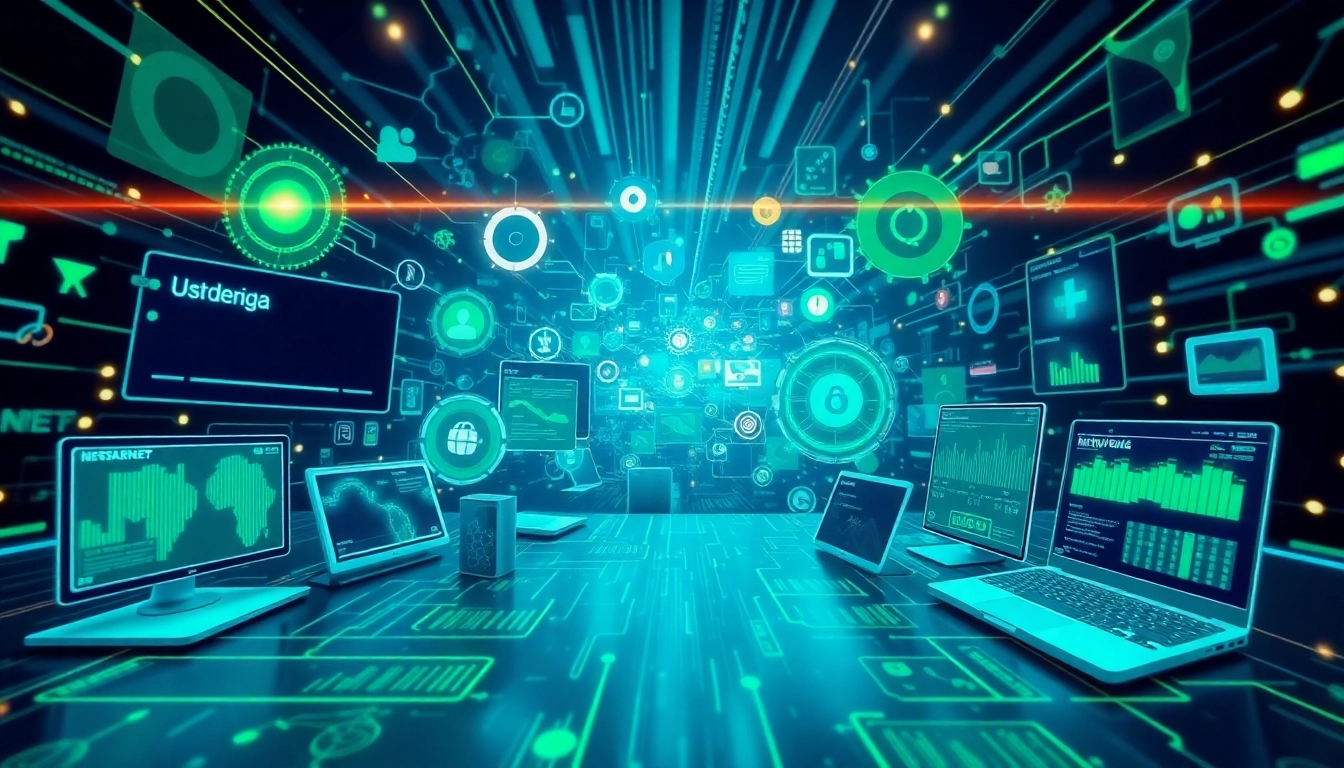Understanding Technology: A Comprehensive Overview
Definition and Origin of Technology
Technology, fundamentally, is the practical application of scientific knowledge in a way that enables the achievement of specific, often practical goals. It spans a vast array of fields and is integral to the development of various societies throughout history. The term originates from the Greek word technologia, which refers to the systematic treatment of an art or craft. Over the centuries, technology has evolved significantly, beginning from rudimentary tools used by early humans to the advanced digital devices prevalent today. By leveraging technology, societies have been able to increase their productivity, enhance communication, and improve their overall quality of life.
Types of Technology Today
Today’s technology landscape is immensely diverse, encompassing various domains that cater to different human needs and preferences. Some primary types of technology include:
- Information Technology (IT): The backbone of modern enterprises, focusing on the creation, storage, and exchange of information through computing systems.
- Biotechnology: Integrating biology and technology, this domain enhances the development of pharmaceuticals, agricultural practices, and food production processes.
- Nanotechnology: Pertaining to manipulating matter on an atomic or molecular scale, it has enabled advancements in medicine, electronics, and materials science.
- Green Technology: Technologies that aim to improve environmental sustainability, including renewable energy solutions, waste management systems, and sustainable agriculture techniques.
- Consumer Technology: This includes devices that enhance personal experiences, such as smartphones, smart home devices, and wearable technology.
Each type of technology embraces unique features and functionalities, often intertwining with others to create hybrid solutions that address both local and global challenges.
Importance of Technology in Everyday Life
The significance of technology in daily living cannot be overstated. It has transformed how we communicate, learn, work, and engage with our environment. For instance, technology facilitates instant communication across the globe through platforms like social media, email, and messaging applications. Educational technology has revolutionized traditional learning, making knowledge accessible to anyone with an internet connection.
Moreover, technology has dramatically enhanced healthcare through innovations like telemedicine, electronic health records, and advanced diagnostic tools. In the workplace, automation and digital tools have streamlined processes, boosted productivity, and fostered collaboration. The integration of technology promotes efficiency and convenience, allowing individuals to manage their time more effectively and pursue their interests.
Emerging Trends in Technology
Artificial Intelligence and Machine Learning
Artificial Intelligence (AI) and Machine Learning (ML) are at the forefront of modern technological advancement. AI simulates human intelligence processes by creating systems that can learn from data, adapt to new information, and perform tasks typically requiring human intelligence. Its applications are vast, spanning from natural language processing to robotics and predictive analytics.
In business, AI aids in data-driven decision-making, customer service enhancement via chatbots, and streamlining operations. Machine Learning algorithms can analyze consumer behavior, making targeted recommendations and improving customer experiences. As AI technology continues to evolve, it promises to influence various sectors profoundly, transforming industries and job roles alike.
Green Technologies for Sustainable Development
As climate change escalates, green technologies have become essential for sustainable development. These technologies aim to minimize the negative impacts of human activities on the environment. Renewable energy sources, such as solar and wind power, are prime examples of how technology is harnessed to tackle global energy challenges.
Moreover, advancements in energy storage, such as battery technology, play a pivotal role in the efficiency of renewable energy use. Green technologies also encompass innovation in transportation, with electric vehicles and smart public transport solutions reducing emissions and enhancing efficiency. Consequently, investing in green technologies is no longer an option but a necessity for sustainable economic growth.
Blockchain and Its Impact on Security
Blockchain technology has emerged as a revolutionary solution for enhancing security and transparency across various sectors, including finance, supply chain, and healthcare. By providing a decentralized ledger system, blockchain ensures data integrity and reduces the chances of fraud. Transactions made via blockchain are immutable, meaning they cannot be altered or deleted once recorded, which is a significant advantage over traditional systems.
This technology fosters trust among parties by eliminating the need for intermediaries, thus accelerating transactions and reducing costs. As industries increasingly embrace blockchain, its applications are expanding, with potential impacts on areas like identity verification, property rights, and even voting systems.
Challenges in the Technology Landscape
Cybersecurity Threats and Solutions
With the rise of digital transformation, cybersecurity has become a critical concern for individuals and organizations alike. Cyber threats, such as data breaches, ransomware attacks, and phishing scams, pose significant risks that can jeopardize sensitive information and disrupt operations.
To combat these threats, organizations must prioritize cybersecurity strategies that include regular audits, employee training, and adopting the latest security technologies. Firewalls, encryption protocols, and multi-factor authentication can further protect sensitive data from unauthorized access. Proactively addressing cybersecurity challenges is imperative to maintain trust and safeguard assets.
Technological Job Displacement
The integration of technology in various sectors has raised concerns regarding job displacement. Automation, AI, and robotics are increasingly capable of performing tasks traditionally carried out by humans. This raises the question: will technology result in job loss or job transformation?
While some roles may become obsolete, new opportunities arise in the technology-driven economy. Upskilling and reskilling initiatives are essential to equip the workforce with the necessary skills to thrive in a changing employment landscape. Organizations and educational institutions must collaborate to foster a continuous learning culture that prepares individuals for the jobs of tomorrow.
Ensuring Digital Equity
As technology continues to advance rapidly, ensuring digital equity is paramount. Disparities in access to technology can create significant barriers for low-income individuals or communities. Addressing the digital divide requires holistic approaches involving policy-making, community initiatives, and technological investments.
Promoting access to affordable internet services, providing digital literacy training, and expanding availability to necessary devices are key steps to ensure that everyone can participate in the digital economy. By fostering digital equity, society can unlock the potential of technology for all, driving inclusive growth and innovation.
Best Practices for Adopting New Technologies
Evaluating Technology Solutions
When considering technology adoption, thorough evaluation is crucial to ensure the chosen solutions meet business needs effectively. Organizations should conduct comprehensive assessments, including cost-benefit analysis, feasibility studies, and alignment with strategic objectives.
Additionally, gathering input from various stakeholders can provide diverse perspectives and help identify potential roadblocks early. By understanding the specific needs of departments and employees, leadership can select technology solutions that enhance productivity and drive growth.
Integrating Technology into Business Processes
Successful technology adoption mandates seamless integration into existing business processes. Organizations should prioritize ensuring that new technologies enhance rather than hinder operational efficiency. Comprehensive planning is required to facilitate a smooth transition, which may include adapting workflows, retraining staff, and updating communication protocols.
Utilizing change management strategies can aid in a successful integration process. Keeping employees informed about the benefits of new technologies encourages buy-in and increases chances for effective implementation.
Training and Development for Technological Proficiency
Continuous training and development are vital in maintaining technological proficiency within a workforce. Organizations should provide ongoing education opportunities, such as workshops, e-learning courses, and certifications tailored to emerging technologies.
By investing in employee development, organizations not only enhance their workforce’s competency but also foster a culture of innovation and learning. Engaging employees in their growth reflects a commitment to adapting to a continually evolving technological landscape.
The Future of Technology: What Lies Ahead
Predictions for Technological Advancements
Looking ahead, several key predictions for future technological advancements can be observed. Trends like the continued growth of AI, the expansion of IoT (Internet of Things), and the integration of augmented and virtual reality into daily life will shape how we interact with technology.
Future breakthroughs may include more sophisticated AI systems capable of advanced reasoning and decision-making, deeper integration of technology into daily tasks, and enhanced connectivity across devices, creating intuitive user experiences.
Societal Impacts of Future Technologies
As technology continues to advance, it will inevitably impact society profoundly. While many technologies will promote efficiency, they may also lead to ethical dilemmas, privacy concerns, and shifts in the nature of employment. Addressing these issues proactively is essential to ensure a balanced approach to technological development.
Society must engage in discussions surrounding ethical uses of technology, regulations to protect privacy, and strategies to adapt to job market evolution. Collaborative efforts involving technologists, policymakers, and community leaders can help shape a future where technology benefits all.
Preparing for a Technology-Driven World
Preparation for a technology-driven world involves not only adopting new technologies but also fostering a growth mindset among individuals and organizations. Educational institutions should emphasize STEM (Science, Technology, Engineering, and Mathematics) education, equipping future generations with essential skills.
Organizations must remain agile and adaptable to rapidly changing technological landscapes. By leveraging innovation, promoting employee learning, and prioritizing sustainability, businesses can position themselves for success in an increasingly competitive environment. Embracing technology can facilitate unprecedented growth and development that aligns with the evolving needs of society.














